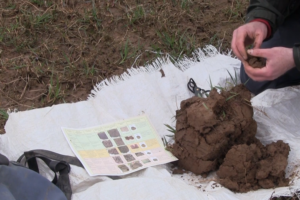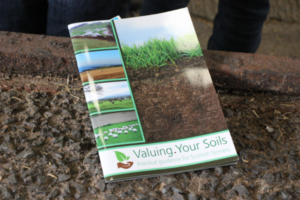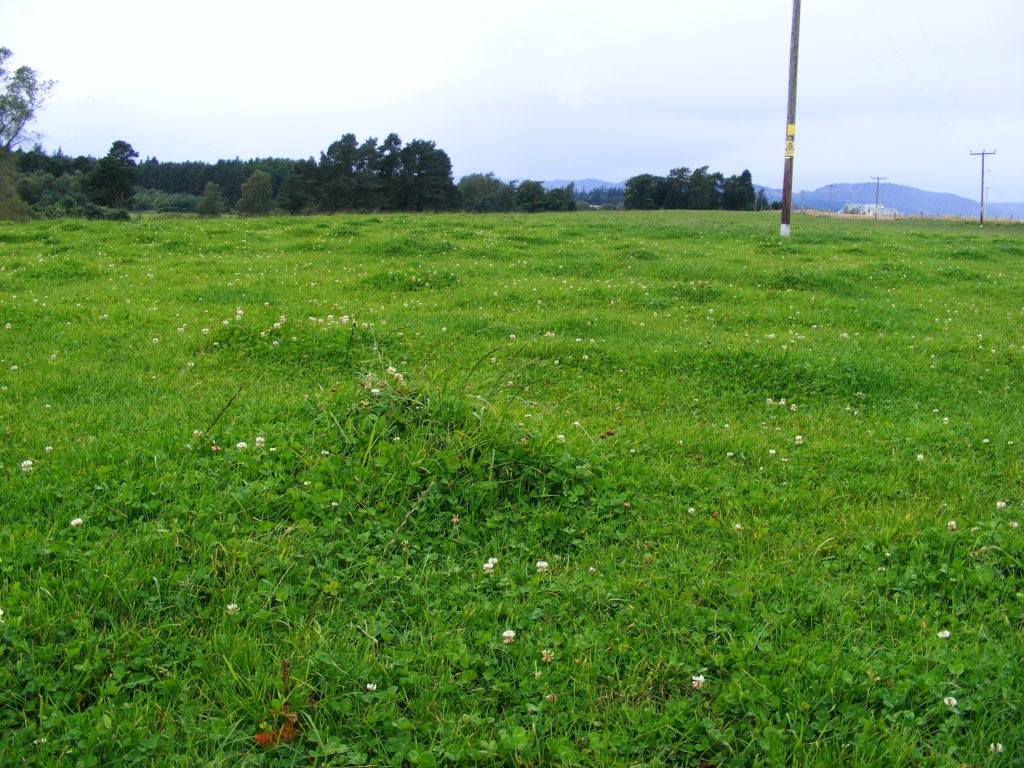Making more forage this year
9 April 2020With contingency planning and system changes possible, some might want to hone the mind on making more forage to increase stocking capacity and stock performance this year.
This article summarises some key areas to look at.
Soil structure and drainage
This winter may have led to soil structure damage. If severe, this will impact silage yield and grazed grass production. SRUC research has shown, this damage can reduce silage yield by up to two tonnes dry matter per hectare (t DM/ha). Therefore, it is worth checking for damage.
Dig a soil pit. The Visual Evaluation of Soil Structure (VESS) methods are available online with videos and a field reference guide. See the resources available in our Soils section here, and download a copy of the Valuing Your Soils booklet for more information on how to improve your soils.
The depth of the compacted layer will determine the machinery required. Poaching damage is usually in the top 10cm, for which a slit aerator is designed to work. Deeper compaction will require a sward lifter or plough. The key is to ensure conditions are not too wet or too dry for sward recovery. Check the drains are flowing too.
Nitrogen fertiliser is starting to be applied across the country as soil temperatures consistently exceed 5oC. This should boost spring grass growth where needed as the wet winter will have washed nitrogen out of the soil. Not all farms will need it, but if stocking levels are higher than usual, nitrogen can be a useful tool.
Grazing Management
Provide grass with an adequate rest period and don’t grass too low. Providing a rest will favour the most productive species in a sward and thereby increases yield. Grazing livestock are selective; they will graze the high energy grasses in the field which favours the weed grasses. Providing rest reduces this selection pressure. Grazed grass grows grass but we must not graze it too low. If grazed too tight it will take more time to harvest the suns energy and recover. The aim is to try and keep the grass in the 5-8cm sweet spot. Mark cm on your wellies to get more in tune with when stock should be moved (5cm) and when the grass is getting ahead (>10cm).
Spring grazing management is critical – this sets the scene for ryegrass tillering, clover and quality (stem and dead material build-up). Speedy reactions to fast grass growing conditions such as taking area out for silage, bringing cattle in with sheep to maintain grazing pressure or mowing will make all this difference for the quality of pasture through the summer.
A challenging year for many, important to keep your eye on what is influenceable within the farm gate. If nothing else thinking more about grass serves as a good distraction from global events.
Poppy Frater for the Farm Advisory Service
- Valuing Your Soils – Practical Guidance for Scottish Farmers
- This brochure includes useful information about Scotland's agricultural soils and practical advice outlining the upfront financial savings and business benefits of better soil management and the efficient use of resources. Action and problem-specific 'field-sheets' are designed for busy farmers with limited time for reading.
- Topics: Climate Change, Soils, Water Management and Crops and Soils
Sign up to the FAS newsletter
Receive updates on news, events and publications from Scotland’s Farm Advisory Service


